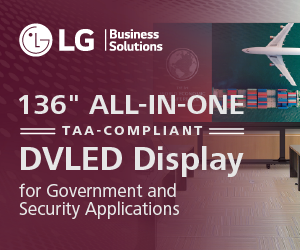How AV and Services Have Transformed the Typical Hotel Stay

Admittedly, I don’t remember much when it comes to traveling as a child. As a family of 6, we absolutely enjoyed family vacations, but I get the feeling we would cut costs on the hotels/motels in exchange for a better experience OUTSIDE of the room. I do remember the cruise to the Bahamas we took when I was a little older, but even that was a tiny room, with tiny TV and we couldn’t wait to leave the room and explore everything else. Why am I taking you on this trip down memory lane? Because when I travel now, it is vastly different. Nowadays I will judge a hotel partially by the technology they provide almost as much as I judge them on their customer service and cleanliness. It is a damper on the trip when I finally get to my room and the TV is anything less than 40” and the signal is out on most channels. So why is it that as a child technology was a non-factor whereas today it’s a necessity? Simple. The hospitality industry has pushed to a new way of thinking and that is to recreate the home experience in many ways. As I have admitted in past writings, I have a love/hate relationship with traveling. I love attending events and spending time with coworkers and partners whereas I hate being away from my family and the comforts of home. What if I arrived in my hotel room and it felt as close to home as possible? What if there were a big TV in a spacious room, a soundbar providing improved audio, a wireless charging station for the latest wireless devices, and substantial Wi-Fi where I could conduct a Teams call as needed and so much more? This isn’t the late 1980’s anymore and the hospitality market is rapidly adapting to the needs of its guests. What are some of those needs? Let us explore further!
To dive into the topic of Hospitality Technology even further, I like to approach as if I was outside and walking into the hotel. What is greeting us the second we step out of our Uber through the moment we reach our rooms, and everything we experience during our stay?
Let’s break this down into the following sections:
Exterior – The outside of a hotel can be a very wide spectrum between the small hotel near the airport and the large casino resort on the Vegas Strip. There are small alterations that can be made to any property to induce that welcoming “at home” feeling that most of us would gladly accept while on the road. Do you step foot into the parking lot and have the urge to sprint to the door because its dark and kind of “sketchy” or are you greeted 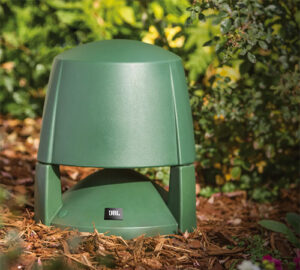 by outdoor signage educating you on local events, exterior Wash lighting that illuminates the hotels brand and pleasant background music from the camouflaged landscape speakers in the garden. Those 3 factors could set the tone for the rest of the stay, because in my eyes if someone is meticulous regarding the exterior details they will normally be just as meticulous with the interior. The same lighting, video, and audio should follow you all around the property to the pool area as well and with the many types of outdoor speakers that exist with varying IP ratings, there truly is something for every need.
by outdoor signage educating you on local events, exterior Wash lighting that illuminates the hotels brand and pleasant background music from the camouflaged landscape speakers in the garden. Those 3 factors could set the tone for the rest of the stay, because in my eyes if someone is meticulous regarding the exterior details they will normally be just as meticulous with the interior. The same lighting, video, and audio should follow you all around the property to the pool area as well and with the many types of outdoor speakers that exist with varying IP ratings, there truly is something for every need.
Lobby/Bar & Restaurant – Once you make it into the lobby, you may immediately spot more signage in the form of a way finder or information board. Back around 2013, I remember staying at a Courtyard in Richmond, VA. 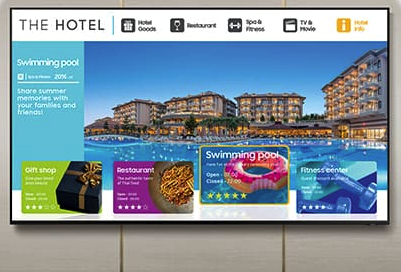 While waiting in the lobby for the rest of the team I noticed a display that was showing local flight schedules for the nearby airport, news updates, and local sports scores. If memory serves me correct, this was my first experience with hotel digital signage, and it clearly left enough of an impression on me that I still remember it a decade later. That display caused me to stay in the lobby longer and kept me informed in the moment. It provided the “home” experience similar to waking up and watching the news or checking my internet and that is what the guests want. Outside of the signage, you surely will find audio or video near the bar/restaurant area. Perhaps you see the typical pendant speaker or low-profile ceiling speaker for announcements and background music as well. All very common regardless of the property you chose. Out of guest view could be the service closest where you find the A/V rack with multiple amplifiers and DSP’s along with networked A/V hardware such as encoders, decoders and switches. Normally kept out of view, but oh so important to the functionality of that given property.
While waiting in the lobby for the rest of the team I noticed a display that was showing local flight schedules for the nearby airport, news updates, and local sports scores. If memory serves me correct, this was my first experience with hotel digital signage, and it clearly left enough of an impression on me that I still remember it a decade later. That display caused me to stay in the lobby longer and kept me informed in the moment. It provided the “home” experience similar to waking up and watching the news or checking my internet and that is what the guests want. Outside of the signage, you surely will find audio or video near the bar/restaurant area. Perhaps you see the typical pendant speaker or low-profile ceiling speaker for announcements and background music as well. All very common regardless of the property you chose. Out of guest view could be the service closest where you find the A/V rack with multiple amplifiers and DSP’s along with networked A/V hardware such as encoders, decoders and switches. Normally kept out of view, but oh so important to the functionality of that given property.
Guest Room – OK, you’ve made it to the promise land! Behold your home away from home – THE GUESTROOM! One aspect that we have yet to touch on is in my opinion the most important. THE WI-FI! Whether you are traveling with young children or attending a week-long trade show, if the property has insufficient bandwidth, you will find yourself in a troubling position. I cannot tell you how many times I have needed hotel Wi-Fi to finish a project, edit a presentation, or even Skype with my kids in their younger days. There absolutely is nothing more painful than to not be connected. Maybe I am not alone in that sentiment though. In a recent poll by TripAdvisor, 89% of travelers ranked free Wi-Fi as the top amenity they search for. In another survey by SmartBrief, 40% of guests travel with 3 or more devices and 25% more network traffic is expected from each of those devices. So, if you are a hotel reading this, how do you even know if your property has the speed it needs? You need to first identify what a guest needs. Streaming movies, accessing cloud, download music, teleconferencing, etc. are all essential to those staying there. This is where “recreating the home experience” really takes a hold. Much like my house, I need to know that I will turn on my device and be able to function as I intended it to. A general rule of thumb is that you need between 1-2 Mbps of bandwidth for each guest. That means that for 100 guest rooms, I am going to recommend between 100-200 Mbps download speeds and that is only for guests. That’s not taking into consideration a possible VOIP phone system, networked A/V elevator alarms, security, etc. As it pertains to the guest room, a close 2nd is the free to guest TV content. Cable, Satellite, and streaming are all options but those too can affect the bandwidth so the conversation needs to be all encompassing and include both when discussing in-room technology. My personal favorite is DIRECTV because of their DRE platform which stands for DIRECTV Residential Experience. Just as the name implies, they are recreating the home/residential platform for hotels. As a past user, it is comforting to get into your room and immediately know the channel lineup and where to find things. It is all part of the experience! Last but not least in the guest room is the A/V. TV sizes have gone up over the years and I find myself judging a hotel over the size of the guest room TV. Any display 42-46” or larger is the sweet spot for me, but that could obviously depend on room size/layout and that particular hotel’s brand standard. Another item that is becoming very common is the soundbar. Once thought of as purely consumer, the soundbar is now finding its way in the hospitality world to improve on the audio experience for guests. Some manufacturers are even making specialty soundbars for hotels and cruise ships where the audio is improved, but not loud enough to disturb other guest rooms with booming bass.

Conference Hall/Conventions/Meeting Rooms – I feel as though I could’ve written an entire piece just on conference halls, meeting rooms, and convention spaces. The technology in these spaces is quite impressive and much like the guest room, could really make or break a guest’s stay at that specific property. The audio portion alone could include ceiling/surface/pendant speakers, column arrays, performance line arrays, amplifiers, DSP’s, mixing console, entertainment lighting, microphones, truss, and more. In the conference rooms you could look at collaboration soundbars and interactive displays not to mention more networked a/v and control systems. Most of the hotels that I have stayed at lately will all have touch panels on the outside of the door to show you which company is occupying that room during what times. It is another item that used to be viewed as a “luxury” but now is becoming a “necessity” in the hospitality space.
In closing, my hope was to encourage you to take a look around the next time you are traveling and perhaps you notice a new piece of A/V that you never knew existed or that the hotel is utilizing technology in a new way to help recreate the home experience for their guests. Whether it is the hotel Wi-Fi, the guest room TV, or the audio/video you experience during the late-night customer dinners, the hospitality market is rapidly turning to AV and Connectivity to increase bookings and keep guests coming back. That is the name of the game after all!
Enjoy this blog?
Let Rob know over on LinkedIn …and/or connect with #ExertisAlmo on our LinkedIn company page.

Rob Voorhees | CTS, CTP, DSCE, CTNS, Dante
Business Development Manager
Supported Manufacturers: Business Communications Services, and Harman: AKG, AMX, BSS, Crown, DBX, JBL, Soundcraft, Martin Lighting

 I’m one of those people who always says “no” to any extras when I make a big purchase. I sometimes feel bad for the finance guy at the car dealership, because I know from the onset that he isn’t going to sell me on a single extra service or add-on. It’s a painful ten minutes of me smiling and saying, “That sounds great! No thank you.” If there was a poster child for the adage, “Men never ask for directions,” I’d be it. To be honest, I just feel like I’m capable and I can figure things out for myself. Admittedly, this approach has rendered mixed results at best…
I’m one of those people who always says “no” to any extras when I make a big purchase. I sometimes feel bad for the finance guy at the car dealership, because I know from the onset that he isn’t going to sell me on a single extra service or add-on. It’s a painful ten minutes of me smiling and saying, “That sounds great! No thank you.” If there was a poster child for the adage, “Men never ask for directions,” I’d be it. To be honest, I just feel like I’m capable and I can figure things out for myself. Admittedly, this approach has rendered mixed results at best… This brings me to the topic of this edition of Breaking Down DVLED, The First Step in Installing a DVLED Video Wall is Admitting you Need Help!
This brings me to the topic of this edition of Breaking Down DVLED, The First Step in Installing a DVLED Video Wall is Admitting you Need Help!


 People who disclose their disabilities to their managers are
People who disclose their disabilities to their managers are 

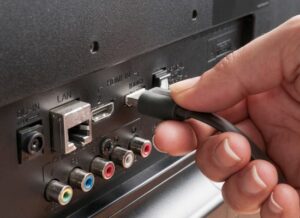 You have just picked out a gorgeous new HD Television at one of the “Big Box” stores. You are super excited, because “Real Housewives of Buffalo” is premiering season 4 later that day, and you cannot imagine how fantastic it will look in your living room. Then the sales associate that helped you pick that display out asks you if you need a high-end HDMI cable to go with that display. He goes on to tell you that it will “enhance the viewing experience” and “provide better quality audio” for you. Do you spend the $75 for that cable? Or is the $10 one available on that XYZ website going to do the trick? Now, for you and your latest reality series, it may not make much of a difference, but when you are in the world of Pro AV, it can be all the difference in the world.
You have just picked out a gorgeous new HD Television at one of the “Big Box” stores. You are super excited, because “Real Housewives of Buffalo” is premiering season 4 later that day, and you cannot imagine how fantastic it will look in your living room. Then the sales associate that helped you pick that display out asks you if you need a high-end HDMI cable to go with that display. He goes on to tell you that it will “enhance the viewing experience” and “provide better quality audio” for you. Do you spend the $75 for that cable? Or is the $10 one available on that XYZ website going to do the trick? Now, for you and your latest reality series, it may not make much of a difference, but when you are in the world of Pro AV, it can be all the difference in the world. This translates into clear, high-quality audio and video output, which is essential for professional applications such as recording studios, live performances, and broadcasting. Whether you are setting up a live event like a concert, installing a conference room solution with high end UC equipment, or setting up a classroom or auditorium in the education space, investing in the higher quality product will help ensure the best performance. In comparison, cheaper cables may not be designed to the same high standards as professional cables. These cables may have lower quality materials and construction, which can result in signal loss, noise, or interference. This can lead to poor audio and video quality, which is unacceptable in professional settings. If performance is key, then you absolutely need Pro-quality cables here.
This translates into clear, high-quality audio and video output, which is essential for professional applications such as recording studios, live performances, and broadcasting. Whether you are setting up a live event like a concert, installing a conference room solution with high end UC equipment, or setting up a classroom or auditorium in the education space, investing in the higher quality product will help ensure the best performance. In comparison, cheaper cables may not be designed to the same high standards as professional cables. These cables may have lower quality materials and construction, which can result in signal loss, noise, or interference. This can lead to poor audio and video quality, which is unacceptable in professional settings. If performance is key, then you absolutely need Pro-quality cables here.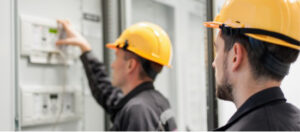 This can result in frequent replacements and downtime, which can be costly and disruptive. Think of the time and money spent having technicians deployed just to replace cables, because they were cheaper at the outset. Those savings up front are costing you more down the road. What a huge waste! You absolutely cannot have an inferior connection break in the middle of a live performance or important video conference, which could have catastrophic effects on your business. Did you know that C2G offers a Limited lifetime warranty on all cable assemblies? They do, and that is just one of the many reasons we are excited to have them as a partner.
This can result in frequent replacements and downtime, which can be costly and disruptive. Think of the time and money spent having technicians deployed just to replace cables, because they were cheaper at the outset. Those savings up front are costing you more down the road. What a huge waste! You absolutely cannot have an inferior connection break in the middle of a live performance or important video conference, which could have catastrophic effects on your business. Did you know that C2G offers a Limited lifetime warranty on all cable assemblies? They do, and that is just one of the many reasons we are excited to have them as a partner.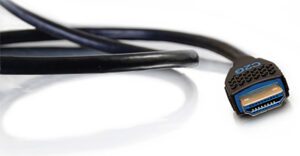 Luckily, C2G has that covered as well. Take a look at their latest and greatest: the
Luckily, C2G has that covered as well. Take a look at their latest and greatest: the 

